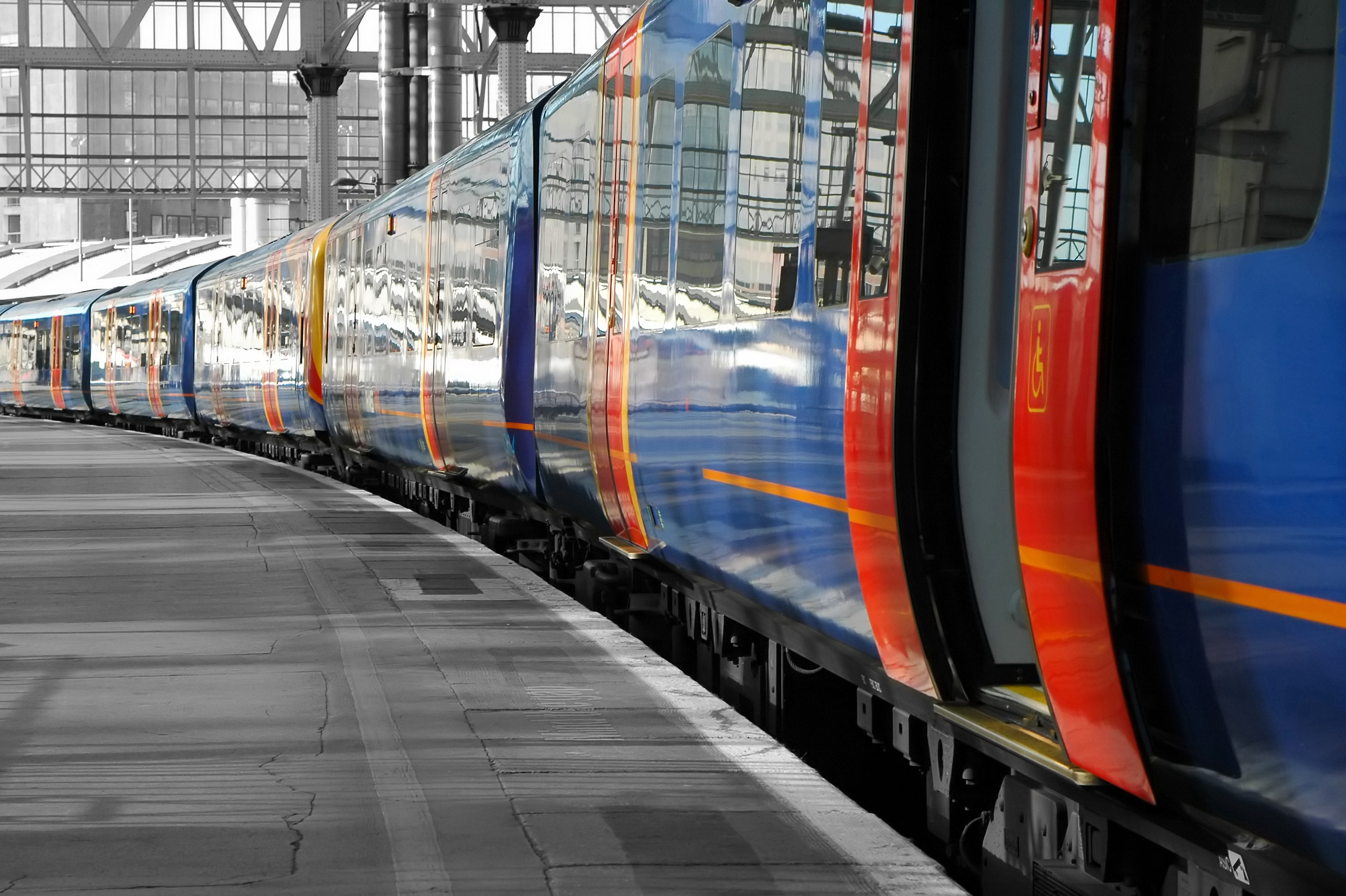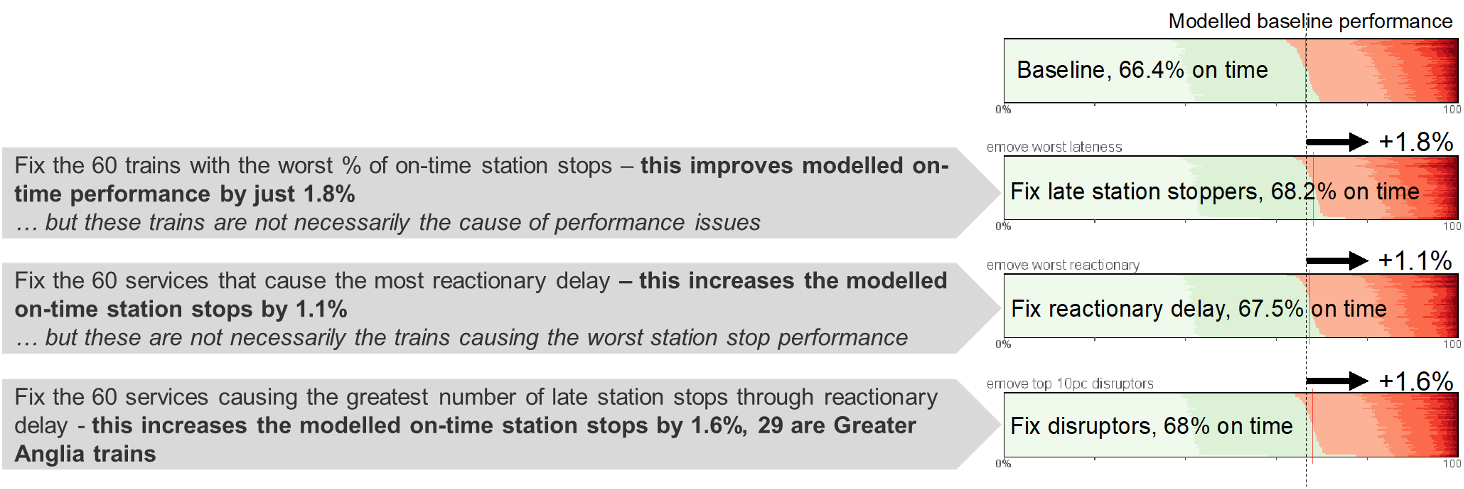

The role of ‘disruptive’ trains in poor rail performance
A case study in partnership with Greater Anglia
“… the model is doing exactly what it is meant to do… it is making us ask the right questions about the drivers of performance risk”
Marc Ware, Performance Manager, Greater Anglia
The challenge
Grior to COVID-19, only 67% of Greater Anglia’s trains arrived at station stops on time. Could finding the services that cause the most disruption to performance, and removing the delays they cause, materially improve performance?
What we did
Greater Anglia’s performance team working with Risk Solutions used SaviRPM to identify trains that were likely to consistently cause poor performance, by modelling multiple simulations of a typical day’s operation. We identified not only the Greater Anglia services that suffered the most modelled delay, but critically services that caused the most reactionary delay, propagating disruption across the network
We then ‘fixed’ these services to see how much service performance might improve. We chose to model them with immunity to subthreshold and attributed delay (an artificially perfect journey). They remained susceptible to passenger dwell delays, association delays and reactionary delays.

What we found
We found that for Greater Anglia:
- Fixing the most disruptive trains does not result in significant performance improvement for Greater Anglia's services
- Many services have the potential to be significant disruptors, the top 10 services causing disruption today may not cause any problems tomorrow
- Half of the services likely to cause disruption are not operated by Greater Anglia – collaboration with Network Rail and other operators will be key to finding a solution to what is a shared problem
“This is giving us the evidence we need … that we have to look beyond attributed delay, and focus on building a more robust timetable and tackling subthreshold delay – and that we have to do this collaboratively
Marc Ware, Performance Manager, Greater Anglia
How Greater Anglia used this information
Instead of spending time and resources atempting to improve individually poor performing services, Greater Anglia’s performance team focussed their attention on finding other ways to improve service performance. The work also spurred on their collaboration with Network Rail and other operators in the region to deal with shared performance pain.
Using SaviRPM
- We set up SaviRPM for the Greater Anglia operating area, almost 500 modelled TIPLOCs (including 178 stations) and over 3000 timetabled services (1,631 Greater Anglia).
- We calibrated the model against real world data, in an iterative process with the performance team, using the interactive visualisations to identify areas of poor model performance until we could reproduce real world results within one or two percentage points. We achieved modelled delays of 66.4% on time station stops for Greater Anglia services compared with 67.1% real world on time – creating a robust baseline for our explorations.
- We then ran the application for a range of disruptive train scenarios, using the interactive visualisations with the Greater Anglia team to identify and 'fix' the troublesome trains.
The modelled results

To find out more… and see the interactive visualisations in action
contact us: savi@risksol.co.uk